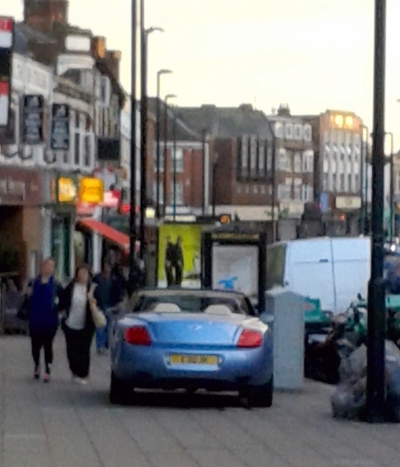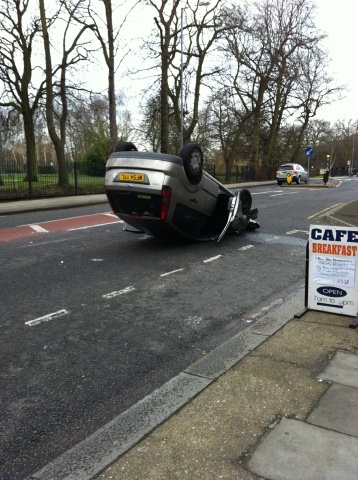The photograph below was taken by David March in Waterfall Road on Tuesday morning.

Considering the speed at which many drivers descend the hill, a similar incident was probably inevitable sooner or later.
It's only a few weeks since a driver turned his car over in Park Avenue, which is an entirely residential side street, not a race track.

Incidents of dangerous driving by "boy racers" occur frequently, probably several times a day. Why do we let them get away with it?


